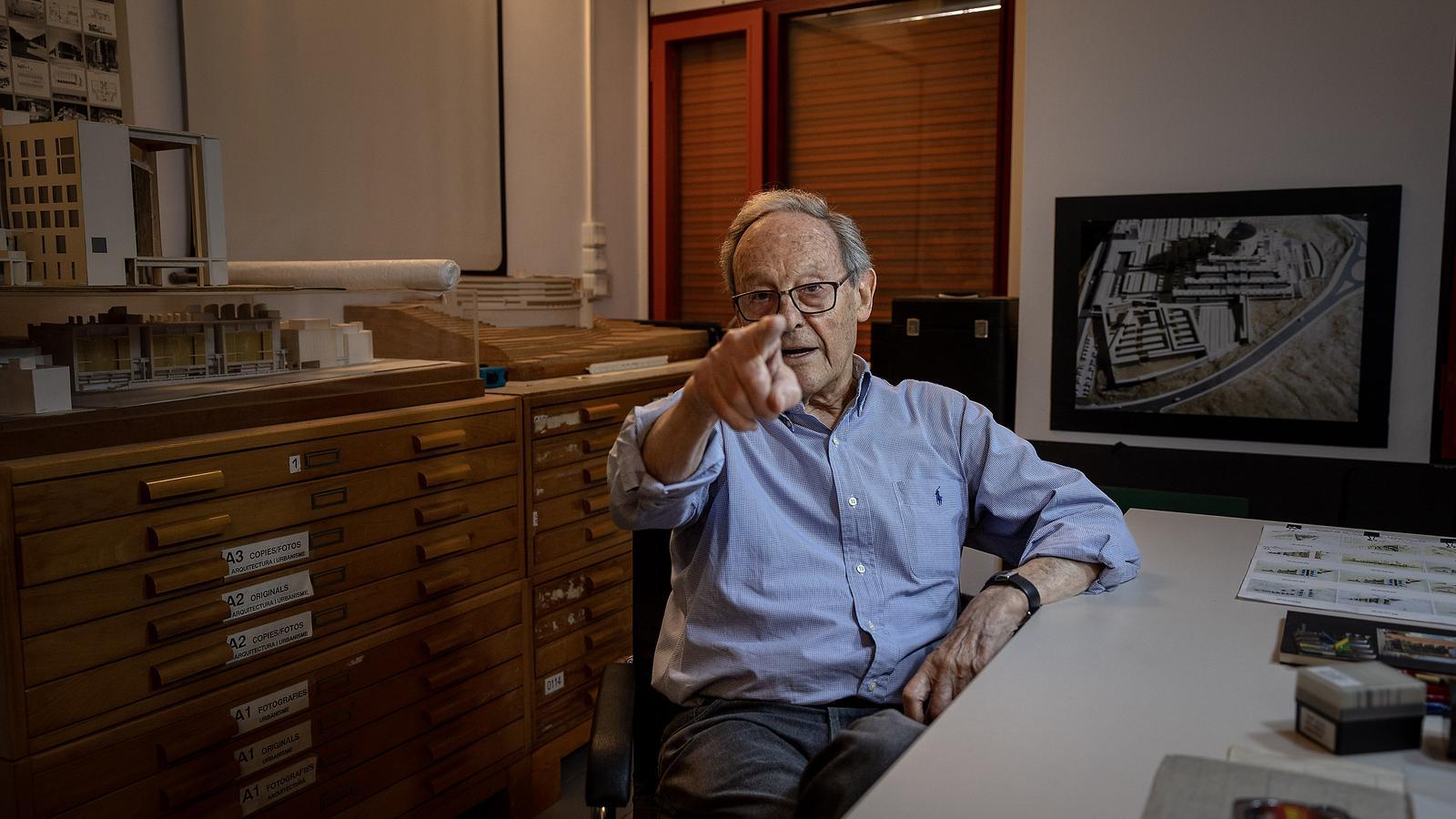Emili Donato's "forceful and monumental" buildings
A monograph does justice to the career of one of the most unique Catalan architects


BarcelonaArchitect Emili Donato (Figueres, 1934) turned 91 in March and maintains an enviable vitality. Donato is a true character and doesn't tend to rebel or play games with the ARA photographer. His colleague and editor Francesc Pernas has dedicated a monograph to the 47-61 Editor imprint, simply titled Emili Donato which can be considered an event, because, although Donato is one of the most active Catalan architects during the second half of the 20th century, he is one of those who has had the least exposure. Thus, as Pernas says in the prologue, this monograph is "an act of justice."
Among the reasons why Donato is not so popular are his uniqueness and his desire for independence. "In Barcelona, there have been a series of cycles surrounding architecture, and everything has happened: from abstract approaches to constructive realism, from the influence of English Brutalism to Italian Mannerism, from Neo-Rationalism to Neoclassicism, etc. But, contemporaneously with all these trends, Emili Donato has been creating, compulsively, rationally, and, above all, personally," says architect and professor Santiago Roqueta in one of the articles in the book. In another, fellow architect Enric Granell singles out Donato for his "strong and monumental buildings," including the homes in the Calafat Urbanization, one of which Coderch praised in a letter; the Baró de Viver homes; the Sant Ildefons CAP in Cornellà de Llobregat; the residence and day center in Horta; and the Igualada Regional Hospital. "While Donato was constructing his buildings, the architecture being produced in Barcelona was very different from his; it was a continuation of what we now call the Barcelona School. Donato was never an architect of the Barcelona School. He was always an architect of the school of architecture, of the school of timelessness," says Granell.
Donato built some of his most important buildings in the 1970s, when the neo-racialism of the Tendenza italiana gained popularity among some of his colleagues. "There was a group of important people, friends, who were careful to follow architectural trends in Europe, especially in Italy, and they created a group spectrum, especially through Oriol Bohigas. But I, by temperament or whatever, have never been associated with these kinds of influences. Obviously, I'm well-known, but I haven't had any. In fact, one of the most notorious episodes in Donato's career was when, in 1968, he renounced the FAD Prize along with Josep Antoni Coderch and Enric Tous. "It came out in the press and was a bit of a scandal. It's further proof that I didn't have a tendency to join in with chapels of any kind," he emphasizes. While Coderch and Tous later welcomed him, he has never received one.
From artist to architect
The son of Reus painter Magda Folch and philosophy professor Emili Donato y Prunera, his training began in the field of fine arts, and he later transferred to architecture school. "My mother wanted to be an architect. But she came from a modest family; her father was a janitor at a high school, and she couldn't study architecture because there were only architecture schools in Madrid and Barcelona. Architecture students used to be upper-class people; now architecture has been democratized," he explains. "I also drew like my mother, and like some others." Donato acknowledges that being an architect used to be "important," but now it's "really difficult." "Now, architects are treated badly, not as professionals. They have to emigrate, they live in poverty and have to enter unpaid competitions," he laments. He is also very critical of the fact that the College of Architects of Catalonia allows that, in public architecture throughout the State, after selecting the designer of a building, a second competition is called for the construction management that can be won by someone other than the designer.
Since Franco's teaching was "impressively stupid, useless and negative", Donato and some of his classmates decided to train themselves by organizing the Torres Clavé Seminars, named in homage to the architect Josep Torres Clavé, who died during the Civil War: writing a study plan of about twenty-six pages. The students met to explain to each other the books by architects we had bought, among which were Frank Lloyd Wright and Mies van der Rohe, and we talked about architecture."
Donato began his professional career on the island of Ibiza because his father, who worked as a teacher, recommended he move there because there were no architects. He returned to Barcelona a few years later to continue developing his talent without specializing. "There was no choice or selection of projects. I made the same selection as an architect with better personal connections than mine. I had no social or family connections; I found work however I could. I took whatever I could, which was quite a bit. Unfortunately, I didn't have the social, economic, or family connections to be able to choose a field within architecture." Another aspect of Donato's career is as an urban planner, with projects and works in countries such as France, Algeria, and Japan. Regarding the Eixample green axes and superblocks, he asserts that they are "a very good idea" and an expression of "the potential of Cerdà's entire urban planning system."
